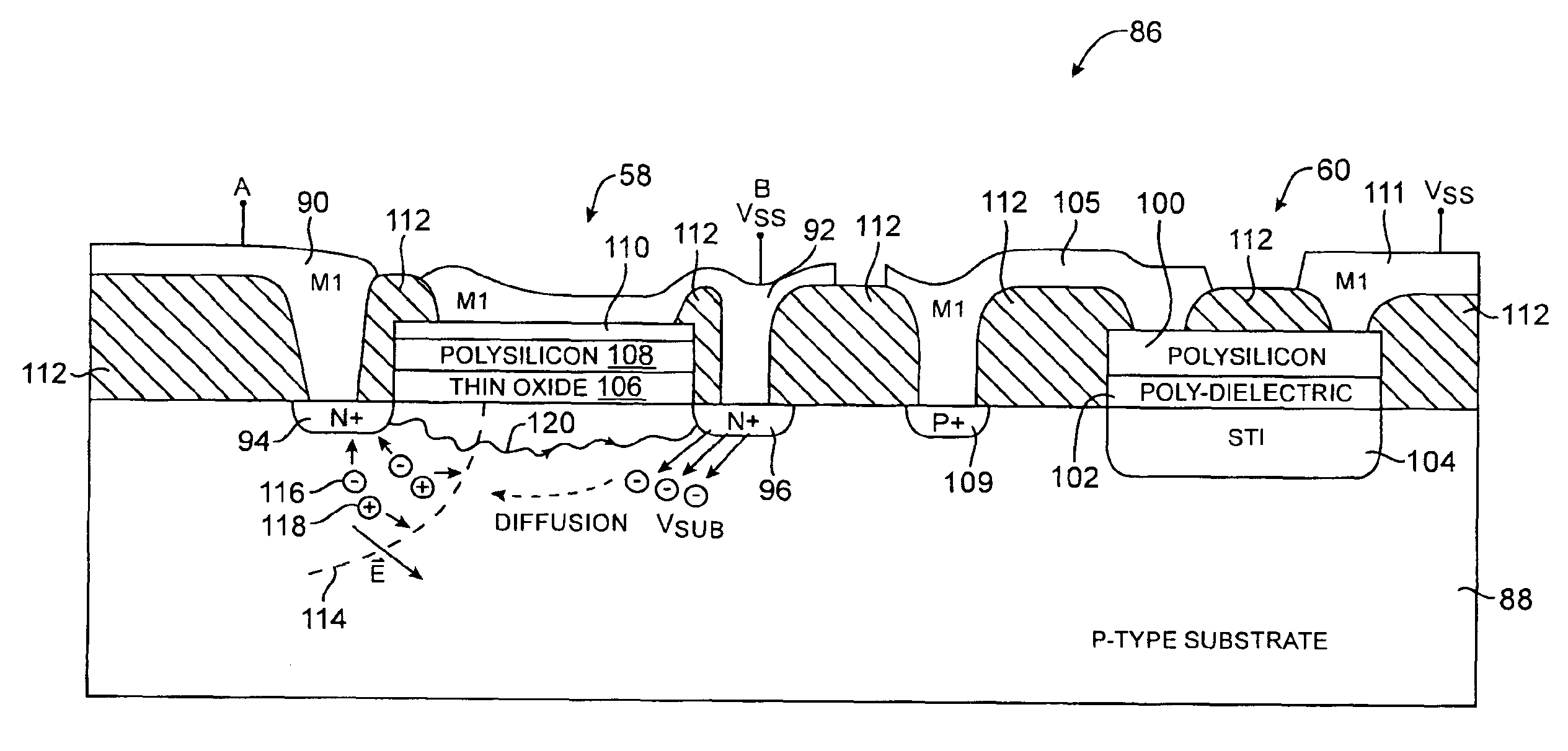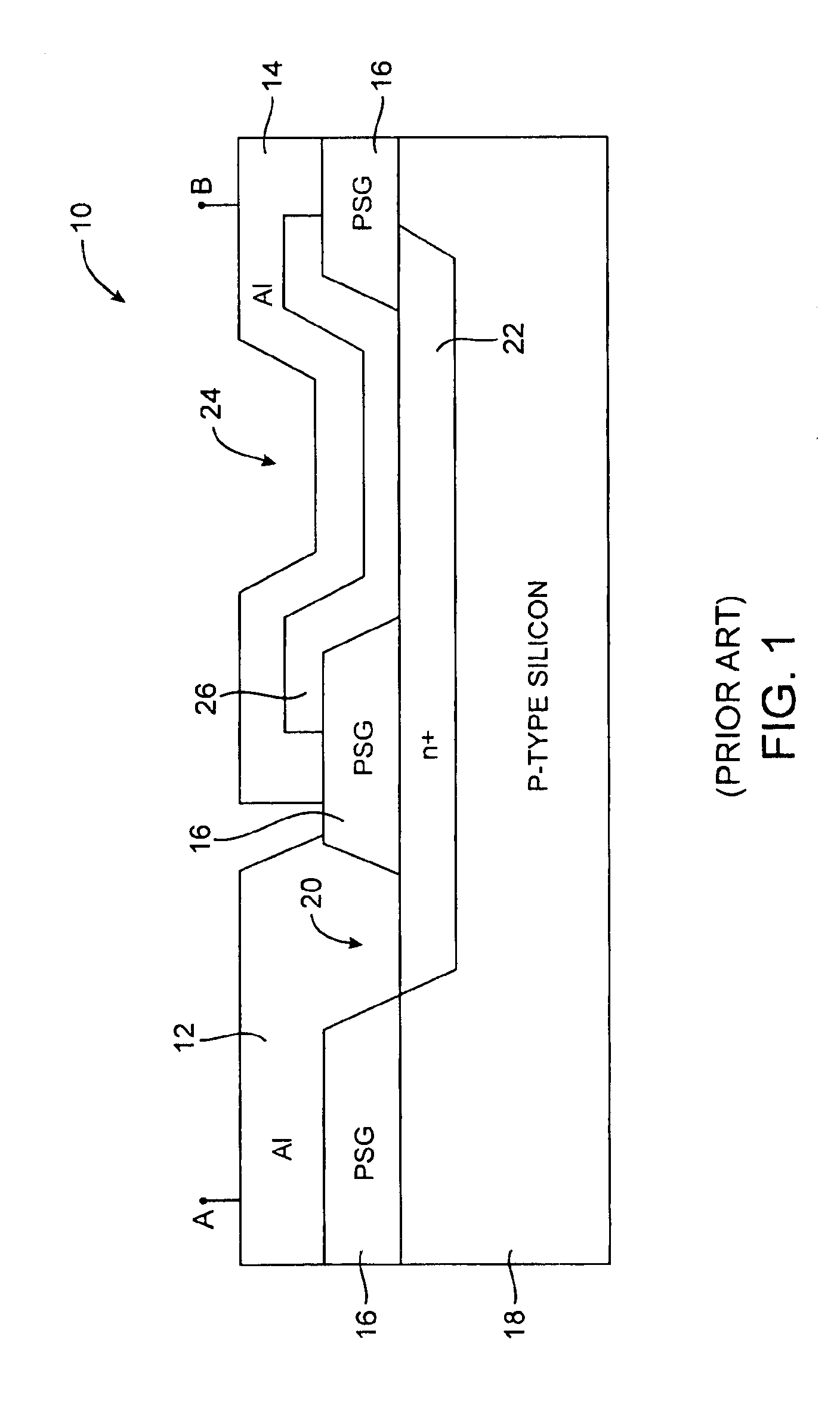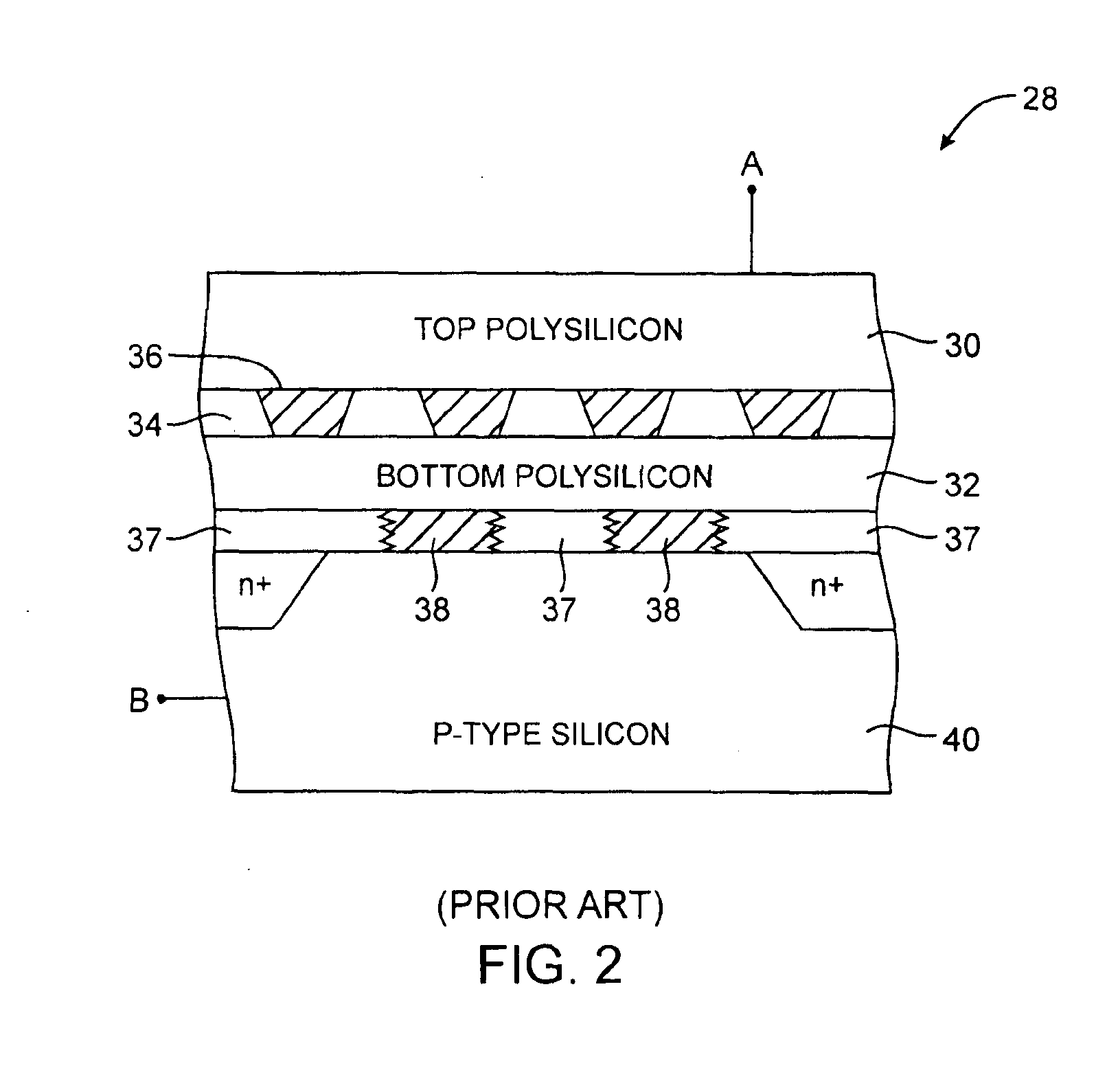Electrically-programmable integrated circuit antifuses
a technology of integrated circuits and antifuses, which is applied in the direction of semiconductor devices, semiconductor/solid-state device details, instruments, etc., can solve the problems of long programming process, high cost, and difficulty in using lasers to blow open copper fuse bodies, etc., and achieves the effect of reducing the drain-to-source resistance and high drain-to-source resistan
- Summary
- Abstract
- Description
- Claims
- Application Information
AI Technical Summary
Benefits of technology
Problems solved by technology
Method used
Image
Examples
Embodiment Construction
[0035]Programmable fuses and antifuses may be used to program (configure) portions of an integrated circuit. The integrated circuit may be, for example, a programmable logic device that has user-customizable logic. The integrated circuit may also be a microprocessor, a digital signal processor, an application specific integrated circuit, logic, memory, a digital circuit, an analog circuit with programmable devices, a combination of such circuits or any other suitable integrated circuit.
[0036]The integrated circuit may be programmed by a manufacturer or by an intermediate or end user. For example, if a manufacturer desires to include a serial number or special coding in the integrated circuit, the manufacturer can program the fuses or antifuses on the integrated circuit appropriately during the manufacturing process. As another example, a manufacturer may produce integrated circuits that contain redundant circuitry. If a repairable defect is detected by the manufacturer during device...
PUM
 Login to View More
Login to View More Abstract
Description
Claims
Application Information
 Login to View More
Login to View More - R&D
- Intellectual Property
- Life Sciences
- Materials
- Tech Scout
- Unparalleled Data Quality
- Higher Quality Content
- 60% Fewer Hallucinations
Browse by: Latest US Patents, China's latest patents, Technical Efficacy Thesaurus, Application Domain, Technology Topic, Popular Technical Reports.
© 2025 PatSnap. All rights reserved.Legal|Privacy policy|Modern Slavery Act Transparency Statement|Sitemap|About US| Contact US: help@patsnap.com



